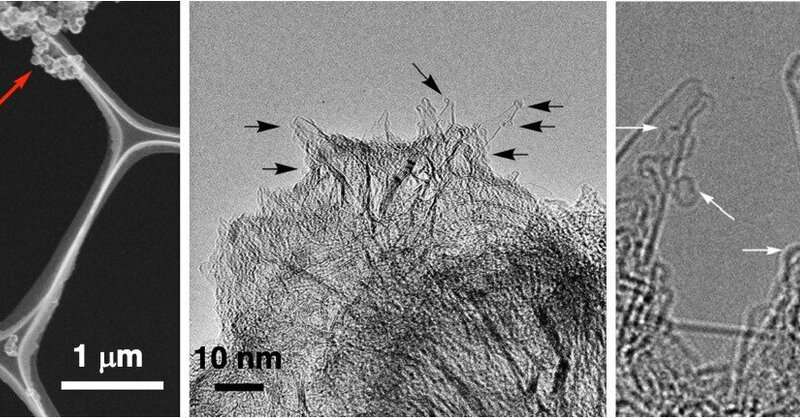Researchers manage to film a chemical process unfolding on the atomic scale for the first time in history.

The paper, lead-authored by Junfei Xing at The University of Tokyo, Department of Chemistry, shows that there are distinct stages in the process of chemical synthesis. Their work could help guide new strategies and methods for chemical synthesis with greater control and precision than ever before. Prime applications are in materials science and drug development, according to the authors.
Smile for the camera
“Since 2007, physicists have realized a dream over 200 years old—the ability to see an individual atom,” said Project Professor Eiichi Nakamura, the paper’s corresponding author.
“But it didn’t end there. Our research group has reached beyond this dream to create videos of molecules to see chemical reactions in unprecedented detail.”
Nakamura’s team specializes in the field of material synthesis, with an emphasis on the control of the processes that are used in this field. However, they’ve always been hampered by the lack of any tool to observe these processes as they unfold.
The different stages of complex chemical reactions are difficult to study as they involve multiple intermediate steps, making them very hard to model. In theory, we could just look at these steps unfolding. In practice, however, it was impossible to isolate the products at each stage and to see how these changed over time.
“Conventional analytical methods such as spectroscopy and crystallography give us useful information about the outcomes of processes, but only hints about what takes place during them,” explained Koji Harano, project associate professor in the Nakamura group and co-author of the study.
“For example, we are interested in metal-organic framework (MOF) crystals. Most studies look at the growth of these but miss the early stage of nucleation, as it is difficult to observe.”
Nakamura and the team spent over 10 years working on a solution — and finally they developed one they call molecular electron microscopy. This meant, overcoming the engineering challenge of combining a very powerful electron microscope with a fast and sensitive imaging sensor (used to record video), while at the same time finding a way to pick and hold molecules of interest in front of the lens.
For the latter, the team employed a specially-designed carbon nanotube which was held in place at the focal point of the electron microscope. This would snag up passing molecules and hold them in place, but not interfere with them chemically. The reaction could thus unfold on the tip of the nanotube, where the team could record it. Harano admits that “what surprised us very much in the beginning was that our plan actually worked.”
“It was a complex challenge, but we first visualized these molecular videos in 2013,” he adds. “Between then and now, we worked to turn the concept into a useful tool.”
“Our first success was to visualize and describe a cube-shaped molecule, which is a crucial intermediate form that occurs during MOF synthesis. It took a year to convince our reviewers what we found is real.”
The team says their work is the first step towards gaining control over chemical synthesis in a precise and controlled manner — a term they call “rational synthesis.” If we know what goes on along every step of a chemical reaction, we can better control the outcome.
In time, the team hopes their work will lead to things like synthetic minerals for construction, or even new drugs.
The paper “Atomistic structures and dynamics of prenucleation clusters in MOF-2 and MOF-5 syntheses” has been published in the journal Nature.


